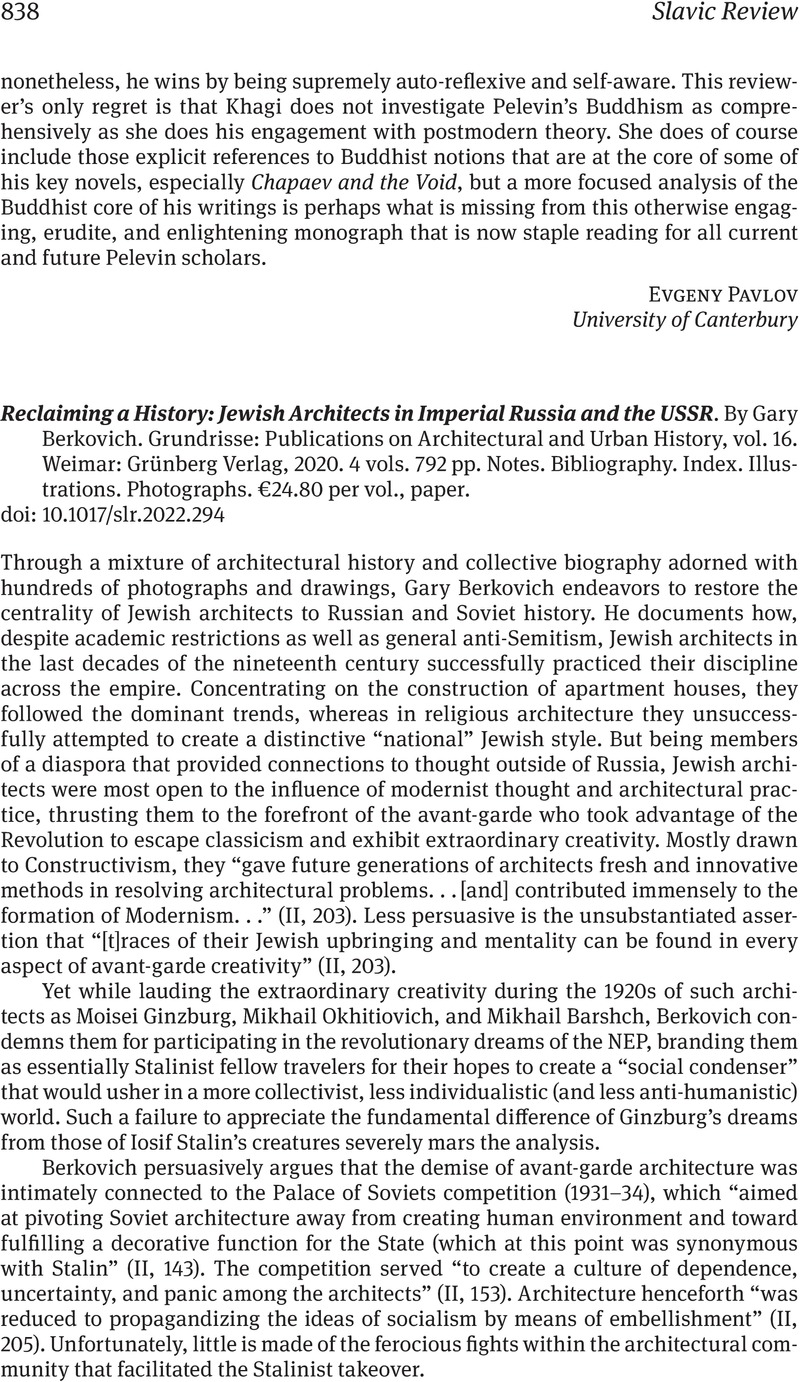No CrossRef data available.
Article contents
Reclaiming a History: Jewish Architects in Imperial Russia and the USSR. By Gary Berkovich. Grundrisse: Publications on Architectural and Urban History, vol. 16. Weimar: Grünberg Verlag, 2020. 4 vols. 792 pp. Notes. Bibliography. Index. Illustrations. Photographs. €24.80 per vol., paper.
Review products
Reclaiming a History: Jewish Architects in Imperial Russia and the USSR. By Gary Berkovich. Grundrisse: Publications on Architectural and Urban History, vol. 16. Weimar: Grünberg Verlag, 2020. 4 vols. 792 pp. Notes. Bibliography. Index. Illustrations. Photographs. €24.80 per vol., paper.
Published online by Cambridge University Press: 07 February 2023
Abstract
An abstract is not available for this content so a preview has been provided. Please use the Get access link above for information on how to access this content.

- Type
- Book Review
- Information
- Copyright
- Copyright © The Author(s), 2023. Published by Cambridge University Press on behalf of the Association for Slavic, East European, and Eurasian Studies


